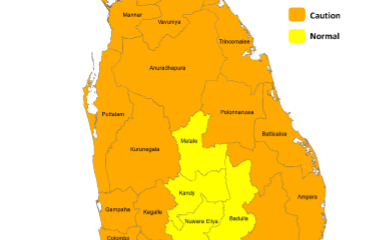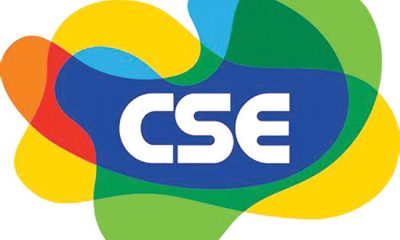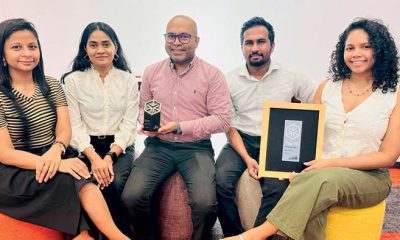Features
Unjustified hype on coming COVID-19 vaccines

by Dr B. J. C. Perera
Specialist Consultant Paediatrician
Many portals of information of various types of media are agog, enthusiastic and terribly excited with the so-called ‘fantastic news’ of the possibility of the arrival of a vaccine against SARS-CoV-2, the coronavirus that causes the disease COVID-19. This little blight of a virus has been responsible for causing a pandemic that has spread through the entire world like an uncontrollable wildfire, practically causing chaos, disorder and bringing untold misery to virtually every nation on our planet. The Homo sapiens have been eagerly waiting and even praying, for something, be it a medicine or a vaccine, which can be used to tame this microorganism. They, the public, are practically wailing for a respite. There is intense expectation that a vaccine, against this bug would be the panacea for all ills of this nasty disease. There are reports of vaccines in the pipeline that are thought to produce intense protection against the disease. If that is the case, it would indeed be like ‘Manna from Heaven’ for suffering humanity.
There is intense expectation among the general public of the entire world and most definitely in the people of this emerald isle as well, that an effective vaccine against COVID-19 is just round the corner and would be available even within one or two months from now. Yet for all that, it is time, and time well spent at that, to somewhat critically examine the realities of the publicity and hype that has been catalysed by these reports. The general populace is of course totally justified in their expectations following these promulgations from a variety of sources. However, is it really the truth and nothing but the truth? Or is it somewhat far from the real and genuine truth?
Many claims have been made, at least by two of the purported manufacturers of vaccines that their trial vaccines are kind of around 95 per cent effective. These claims seem to be based on provisional and interim results of all phases of animal and human

clinical trials, announced grandiosely in the public domain, even before proper completion of Phase 3 Clinical Trials. It is pertinent to remind people that Phase 3 Clinical Trials by sheer definition, should involve tens of thousands of human volunteers. By virtue of the lack of completeness of Phase 3 Clinical Trials, none of these claims have been substantiated through publication in reputed Scientific Journals. That really means that there has not been any intense and rigorous scientific scrutiny and peer-review of the results that have been claimed. What we have today are outwardly impressive and dazzlingly attractive statements made by the manufacturers of these vaccines, whose claims have not been
validated and accepted by a discerning scientific community.
So far, no vaccin e against COVID-19 has been registered under any internationally recognized regulatory authority, or for that matter, even the World Health Organisation (WHO). True enough, the WHO has been examining the feasibility of securing an effective vaccine, its provision to the entire world and the tremendously complicated logistics of its distribution. However, that is really in anticipation of the arrival of a scientifically effective and safe vaccine. It is of course a very wise course of action to follow. If and when such a vaccine arrives, we should not be caught napping.
At least one manufacturer of a vaccine, that has claimed around 95 per cent effectiveness, has suggested that their vaccine would be available for the general public by the first half of 2021, which is just next year and perhaps just a few months from now on. Even then, are we likely to get it in Sri Lanka? Even if we manage to get it, is it for everybody in the country?
It is on record that millions and even billions of doses of the vaccine have already been contracted for and even paid for by some of the countries of the developed Western world. It will probably become a despicable tragedy of vaccine nationalism. ‘I’ and ‘We’ before all others seem to be the buzz phrase. The administration of one notorious leader from a very affluent Western country has compared the global allocation of vaccines against COVID-19 to oxygen masks dropping inside a depressurizing aircraft. They have so pontificated; “You put on your own first, and then we want to help others as quickly as possible”. Incidentally, Sri Lanka has no such contracts with the manufacturers of these vaccines. As these vaccines have not completed safety studies and as no recognized regulatory body has registered them, Sri Lanka is not in a position to make upfront payment and reservations for them either, even if we can garner the money in the face of an economic downfall caused by the virus itself.
At the time of writing of this article in the evening of 23rd November 2020, it was reported in the media that the G-20 Summit declared that their members would take all necessary steps to ensure equal and equitable distribution of a COVID vaccine to all countries of Mother Earth. To some in the know-how, this may definitely appear to be wishful thinking. Some of these very same countries that made this pledge are the same worthies who, not all that long ago and in the face of global shortages, hoarded supplies of respirators, surgical masks, and gloves for their own hospital workers’ use. Overall, more than 70 countries plus the European Union imposed export controls on local supplies of personal protective equipment, ventilators, or medicines during the first four months of the pandemic. That group also includes most of the countries where potential Covid-19 vaccines are likely to be manufactured. In fact it is well recorded that such hoarding of vital equipment, medicines and vaccines is not new. A case in point is that of a vaccine that was developed in just seven months for the 2009 pandemic of the influenza A virus H1N1, also known as swine flu. That contagion killed as many as 284,000 people globally. But wealthy countries bought up virtually all the supplies of the vaccine. After the World Health Organization appealed and intervened, several of these very same countries agreed to share just 10 per cent of their vaccines with poorer countries. However, the caveat of that ‘magnanimous’ gesture was the stipulation that they would do so only after determining that their remaining supplies would be sufficient to meet their domestic needs. As for the future behaviour patterns of these very same countries regarding a COVID vaccine, your guess is as good as mine. If history is anything worthwhile to go by, they would get up to their tricks, once again.
We have an organisation, The Vaccine and Infectious Diseases Forum of Sri Lanka, which was established over a decade ago. Its objectives are to educate healthcare workers and the public regarding vaccines and vaccination and to have a dialogue with the Ministry of Health on vaccine related matters. It consists of, among others, immunologists, microbiologists, paediatricians, community physicians and family physicians, who practice vaccination and/or have an interest in vaccines. In a recent communiqué, published in The Island Newspaper on 24th November 2020, they have decreed that the only way that Sri Lanka would get the COVID vaccine would be through COVAX, the initiative of the Global Alliance on Vaccines and Immunization (GAVI), WHO and others. COVAX pledges to give all low and middle income countries equitable access to vaccines. The vaccines will be made available to priority groups. These include healthcare and social care workers, elderly, and persons with chronic non-communicable diseases. However, the most likely chances are that WHO/COVAX would be able to provide some vaccine doses to Sri Lanka only towards the end of 2021. WHO/COVAX has pledged that they would reserve a supply of vaccines necessary for only about 20% of our total population, and Sri Lanka will have to pay for them. They have also indicated that they do not wish to buy vaccines that exceed a cost of 20 US dollars per dose for any country. Apart from anything else, what the reaction of the general public would be to a scenario where only 20 per cent of the population is provided with a vaccine that is claimed to protect against a potentially fatal infection, is indeed mind-boggling. It would not be a surprise at all if the populace decides to get on to the roads in protest. There might even be combative riots.
In a truly scientific sense, the COVID vaccine research studies that have been carried out so far, apart from the claims of around 95 per cent efficacy, have not given us reliable information as to how long the immunity would last, how it might wane over time, the degree of protection in different age groups, whether yearly vaccination like the influenza vaccine would be necessary, whether the effectiveness would be just to prevent symptomatic disease rather than preventing infection by the virus, the absolutely essential logistics of transport of the vaccines, possibilities of major adverse effects that may come on after a protracted period of time, the manufacturing capabilities of the providers and the actual cost of bulk purchases of these vaccines. These are just a few among several other hitherto unanswered questions. In particular, we have no information about the use of the vaccine together with or without physical distancing, hand washing and mask wearing. Would the usage of even an effective vaccine contribute to our getting on with life as it was in the Pre-COVID era? Would it allow us to abandon all the measures advocated by health professionals as proven preventive strategies? These seem to be queries that need to be addressed most urgently and ever so decisively, well before a vaccine is released for general usage.
We need to face the spectre of stark reality in the face of many unknowns in this novel virus infection. There are many significant questions and very few answers. Real and rigorous scholarly science dictates that these have to be firmly and truthfully dealt with before we can claim that we would be able to defeat this marauding virus by using a vaccine. Scientifically unsubstantiated sensational proclamations that trigger public hysteria and the vision of a bright light at the end of the tunnel, are certainly not of the essence, and are very definitely not in the dominion of the desperate need of the hour.
In such a scenario, the general public should consider these contemplations ever so carefully and, of course, sanity should prevail. For at least the time being, it is vitally essential to implement mechanisms to educate the public on getting vulnerable persons to hospital early for management of complications of COVID-19 and to prevent unnecessary deaths. As so eloquently expounded by The Vaccine and Infectious Diseases Forum of Sri Lanka, it cannot be stressed too strongly that it is absolutely essential and undoubtedly crucial to continue vigorously with the public health recommendations on wearing face masks, physical distancing, hand washing and related mechanisms, which have stood the acid test of time, even from the era of the Spanish Flu of 1918.
There is a recent movement known as ‘BLACK LIVES MATTER’ in the Western world. It has taken those countries by storm to protest against injustices to people whose skin colour is black. The Westerners sometimes label South Asians as ‘Brown Sahibs’ because our skin colour is more akin to brown than to real black. In case there comes a time when this world has a safe and effective vaccine against COVID-19, all we can tell the foreign powers who control such a vaccine is that ‘BROWN LIVES MATTER TOO’.
Features
Proxy wars make unsettling comeback

 It’s the day of the North-East proxy war all over again. Concrete proof that this is so comes in the form of the latest military aid package approved for Ukraine by the Biden administration running into $60 billion. So substantial is this injection of assistance that it has prompted Ukrainian President Volodymyr Zelenskyy to see it as pointing to a “chance of victory”.
It’s the day of the North-East proxy war all over again. Concrete proof that this is so comes in the form of the latest military aid package approved for Ukraine by the Biden administration running into $60 billion. So substantial is this injection of assistance that it has prompted Ukrainian President Volodymyr Zelenskyy to see it as pointing to a “chance of victory”.
To the extent to which the West sees some of its best interests, such as the right to self- determination, being eroded in the Ukraine, to the same degree could the latter’s efforts to protect its independence against the Russian invasion be seen as a proxy war where the West pits itself indirectly against the East, in the form of Russia.
Only time will tell whether Zelenskyy is right in seeing the emergence of a “chance of Victory”, now that the much hoped for aid has arrived from the West, but increasingly sizeable and sophisticated arms for Ukraine foreshadow a further prolongation of the wasting war in the Ukraine. While the Russian armed forces would need to brace for an escalating and more destructive confrontation in the Ukraine, the civilians on both sides of the divide should see themselves as being placed ‘on the firing line’ as never before. Overall, the human costs of war would prove staggering.
To make matters far worse for the Russian side, the UK government too has weighed in with an aid package for Ukraine to the tune of Sterling Pounds 500 million, making the prospect of bringing early relief to the relevant suffering publics by the international community a very distant one, since the war in the Ukraine would be stepped-up several fold as a result of the influx of more arms.
It would not be irrelevant, at this juncture, to take the minds of Russia’s rulers to their Cold War failure in Afghanistan. There was nothing to gain from the long-running Afghan quagmire for both sides to the conflict. The USSR’s failed military intervention left behind an Afghanistan which has wilted in the grip of big power rivalries over the decades.
However, Afghanistan was the last of a number of Cold War era proxy wars which rendered the world an increasingly dangerous place for the majority of its peoples. We are not seeing a Cold War type ideological confrontation in the Ukraine, but it is an open question whether the Russian people, for instance, are gaining anything substantial from the war right now.
The Ukraine situation, though, points to the primacy of sovereignty and issues flowing from it in these post-Cold War times. What Ukraine impresses on ambitious global powers is the impossibility of waging colonial era type military interventions in particularly the global South at present. Ukraine, under President Zalenskyy, has decided to fight back the Russian invasion tooth-and-nail and the likelihood is that there would be no clear winners from this war of attrition.
An independent country which is committed to protecting its sovereign rights has no choice but to fight back forces that are intent on destroying it and this is the task that Ukraine has set for itself right now.
On the other hand, the Russian political and military establishments are in an effort to revive the colonial project in Ukraine, which is a preposterous proposition in the present global political order which is gravitating towards political and economic liberalization. Given this backdrop it is small wonder that the West and its military arm, NATO, are firmly behind Ukraine.
Not surprisingly, the West is seeing in the Russian invasion of Ukraine a flagrant violation of all the political values that it claims to uphold and protect. There is no turning back on the moves towards political and economic liberalization that characterize the current neo-liberal age.
Moreover, by invading Ukraine it could be said that Russia is in an attempt to take the world back to some of the earliest stages in the development of modern day capitalism. Besides, if Russia’s reasons for invading Ukraine are to be accepted, any bullying big power could consider itself justified in invading its smaller neighbours, which it sees as coming under its suzerainty.
Accordingly, the world is in for a long-running East-West proxy war in the Ukraine. However, the world’s security worries would in no way end with the Ukraine because it also has other major concerns in the form of the Middle East blood-letting and the Taiwan Straits, in addition to those parts of Africa that are continuing to be weighed down by inter and intra-state turmoil.
In the Middle Eastern theatre and in the Taiwan Straits, intervention by the West is bound to continue and intensify because the latter sees some its crucial interests as being threatened in the relevant regions. Despite its keenness to extend humanitarian assistance to the war-affected populations in the Gaza, the US remains committed to protecting Israel’s best interests.
Such concern has heightened in the wake of the current hostilities between Iran and Israel. It would be in the US’ interests to keep Iran in check because the latter is a threat to Israel as well as to the West’s oil and energy supplies. Accordingly, the US would be going the extra mile to ensure Israel’s security while preventing Iran from being too great a military and political power in the Middle East.
The US could work towards the latter aims by constantly arming Israel and ensuring that the military balance in the region is constantly in favour of Israel rather than its foes’. Here too, then, is an ongoing proxy war between the West and the East; the latter taking the form of Iran which is backed by China and Russia.
Another potentially destructive proxy war between West and East is, meanwhile, working itself out in the Taiwan Straits. The US has over the years been seeing itself as a natural ally of Taiwan because the latter is a capitalist outpost in South East Asia as well as being viewed as an adversarial, break-way state by China. In its efforts to contain the power of China in Asia, the US has been seeing it to be in its interests to ensure the security of Taiwan as against China’s growing regional predominance. All this works out to more Western military aid to Taiwan, going forward.
Accordingly, proxy wars between West and East are once again surfacing unsettlingly in international politics. Military budgets of Western powers are set to grow at the expense of welfare budgets. Needless to say, the latter trend will eventually result in growing public unrest and anger towards governments.
Features
Artificial Intelligence: Are we getting into it with our eyes open? – Part II

by Prof. Janendra De Costa
Senior Professor and Chair of Crop Science, Faculty of Agriculture, University of Peradeniya
How prepared is Sri Lanka for AI?
With the initiative coming from the very top, it is likely that AI will come to the fore at least in the official documents on development strategy and policy in the near future. As promised by the Minister of Education, AI is likely to make its way in to school curricula as well. Being an election year, there is a good possibility that the manifestos of all mainstream political parties in Sri Lanka will carry statements about promoting AI. Therefore, it is pertinent to ask whether Sri Lanka has the pre-requisites for successful adoption of AI in its key sectors and whether AI can be included in the school curricula from next year onwards. While confessing to be a non-expert in AI, my view, as an educator, researcher and a practitioner of Science is that Sri Lanka needs a substantial effort to first build a foundation for successful adoption of AI.
First and foremost, Sri Lanka lacks the human capital, an adequate number of trained personnel and practitioners in AI. The considerable exodus of experts in computer science and related technologies since the 2022 economic collapse and its repercussions in the aftermath have left the country significantly impoverished in terms of expertise in almost all established disciplines. The scarcity of experts would be even more acute in new, emerging disciplines such as AI. When the President and the Minister of Education talks about including AI in the school curricula, it is doubtful whether they have considered the availability adequately trained teachers to teach AI in schools or whether there has been adequate preparation in terms of computer facilities, textbooks (printed or electronic) and other learning resources.
Secondly, the past record of adopting new, emerging technologies in Sri Lanka tells us that the tendency will, most probably, be to adopt AI tools developed elsewhere with algorithms trained on data collected elsewhere. Only a small minority of the Sri Lankan experts is likely to take the considerably more difficult pathway of developing our own AI tools and training them on data collected specifically in a Sri Lankan context. As mentioned earlier in this article, the big, comprehensive data sets on which to train AI algorithms do not exist at present in most of the key areas where AI could make a significant positive contribution to national development of Sri Lanka. With the present and past levels of government investment on R & D in S & T (Sri Lanka with only 0.1% of its GDP invested in Science and Technology ranks among the lowest in the world in this index), there is little hope that there will be adequate and sustained support to develop our own AI tools to tackle the specific development needs of higher priority to Sri Lanka. The argument that why spend so much to develop our own AI tools when those already developed elsewhere are available will readily come from the government officials, especially those in the treasury, who have little understanding of how advancements in S & T take place via R & D.
Sri Lanka’s previous experiences in adopting new, emerging technologies
While we are about to embark on a journey to integrate AI into our national agenda, it is worth noting how similar initiatives in the past to integrate new, emerging technologies have fared. In this regard, the story of nanotechnology is especially relevant and offers valuable lessons. Nanotechnology in Sri Lanka was first promoted around 2005 as a technology that carried enormous promise for Sri Lanka to propel itself to the next level economic development via production of globally competitive nanoproducts. The initiative was spearheaded by the newly appointed Minister of Science and Technology, who was himself a former scientist and a former director of a state-sector research institute. The argument at the time was that Sri Lanka should invest its limited financial, infrastructural and humany resources on R & D in a few high potential areas rather than spreading it across all disciplines. Nanotechnology and biotechnology were the high-potential areas that were identified. The Sri Lanka Institute of Nanotechnology (SLINTEC) was established with state-of-the-art facilities on par with those available in developed countries and a select group of scientists from Sri Lanka and a few expatriate Sri Lankan scientists were employed on remuneration packages which were far superior to that enjoyed by the scientists in state sector R & D institutions. The initial funding came from a public-private partnership between the government and a few private sector organizations. It is worth noting that to provide its share of the venture, the National Science Foundation, the premier government organization that was funding S & T research in Sri Lanka diverted all its allocation for research from the treasury to the SLINTEC, thereby depriving research funding to all other areas of Science and Technology for a few years. To cut a long story short, today, after nearly 20 years, the expected nanotechnology boom along with the globally-competitive nanoproducts and the projected increase in the national GDP have not materialized while the SLINTEC, with all its state-of-the-art facilities barely survives, struggling to sustain itself financially, with all its expatriate Sri Lankan scientists gone back to their adopted countries and almost all Sri Lankan scientists who were employed initially having left for universities, in Sri Lanka and abroad. The most notable achievement of SLINTEC during this period was the development of a urea-based nanofertiliser, which when applied to the soil had the capability to release nitrogen slowly, thus facilitating its uptake by plant roots with minimum losses due to leaching. However, the US patent of this product, which was developed with a significant contribution of public funds of the Sri Lankan government was sold to a foreign company in a transaction, the details, and conditions of which are still not transparent to the general public. Ironically, after having spent so much on developing a nanofertiliser of its own, Sri Lanka had to spend another huge sum of public money to purchase a liquid nanofertiliser during the ill-fated 100% organic agriculture drive. Like the 100% organic agriculture project, the imported liquid nanofertilizer turned out to be largely ineffective.
The lesson that can be learnt (for those who are willing to learn) from Sri Lanka’s experience to adopt and promote nanotechnology is that successful and widespread adoption of a new technology is not possible without first establishing a broad base of R & D expertise and infrastructure in an adequately wide range of disciplines and applications. Establishing a centralised institute, however well-equipped, will not be sustainable in the long run and will not make a significant impact on national development. The adoption of biotechnology in Sri Lanka, which emerged as a discipline of high promise to Sri Lanka in the 1990s, is marginally better though nowhere near the level required to boost the national economy. When the present Minister of Education was holding the portfolio for Technology and Research under a previous administration, there was a proposal by a few academics close to him to establish a well-equipped Centre for biotechnology along the same lines as SLINTEC. The present author, as a member of the National Science and Technology Commission (NASTEC) at the time, advocated establishment of several biotechnology research groups in key areas of its applications and supporting them through equipment and other resources rather than spending on establishing one big Centre. This advice fell on deaf ears and the proposal went ahead but stalled when the Minister left his portfolio. This is illustrative of many initiatives in Sri Lanka, especially related to Science and Technology, which come from the top (i.e. the politicians). These proposals often come with a ‘sell-by-date’, which is either the next election or the period of the politician in charge of the specific Ministry. It is important to take into account all these historical facts and learn lessons from them when embarking on this new initiative to promote, develop and adopt AI.
Concluding remarks
There is no doubt that AI has the potential to bring about significant positive impacts in several key sectors of the Sri Lankan economy and many facets of the day-to-day life of the Sri Lankans. However, it is important to understand that realization of that enormous potential of AI, which is already happening in the developed world4,7, requires a substantial investment from within Sri Lanka to educate itself on the strengths and limitations of AI and develop, as much as possible, AI tools of its own or adopt those developed elsewhere only after rigorous validation within the Sri Lankan context. Adequate precautions are required to address the inherent limitations of AI, formulate and implement safeguards against the risks and illusions posed by AI and to guard against total reliance on AI once it gains the trust of its users1,5. In particular, measures are needed to prevent the loss of creativity in future generations of Sri Lankans, especially the students and other learner groups, who are highly likely to be hooked on AI tools in their learning process.
Additional Reading
1. Why scientists trust AI too much – and what to do about it. (Editorial). Nature, 627: 243. 14 March 2024. https://doi.org/10.1038/s41586-023-06221-2.
2. Alvarado, R. (2023). What kind of trust does AI deserve, if any?. AI and Ethics, 3(4): 1169-1183. https://doi.org/10.1007/s43681-022-00224-x.
3. Carroll, J. M. (2022). Why should humans trust AI?. Interactions, 29(4), 73-77. https://doi.org/10.1145/3538392.
4. Krenn, M. et al. (2022). On scientific understanding with artificial intelligence. Nature Reviews Physics, 4(12): 761-769. https://doi.org/10.1038/s42254-022-00518-3.
5. Messeri, L. & Crockett, M.J. (2024). Artificial intelligence and illusions of understanding in scientific research. Nature, 627: 49-58. https://doi.org/10.1038/s41586-024-07146-0.
6. von Eschenbach, W.J. (2021). Transparency and the Black Box problem: Why we do not trust AI. Philosophy & Technology, 34: 1607–1622. https://doi.org/10.1007/s13347-021-00477-0.
7. Wang, H. et al. (2023). Scientific discovery in the age of artificial intelligence. Nature, 620: 47-60. https://doi.org/10.1038/s41586-023-06221-2.
The writer is a Fellow of the National Academy of Sciences of Sri Lanka and has been an academic and a research scientist in Agriculture and Natural Sciences for over three decades while being based in Sri Lanka.
Features
Promote purple sweet potato

By Prof. Kirthi Tennakone
The sweet potato is probably the oldest cultivated crop. Native to tropical America, Peruvians grew it 8,000 years ago. Colombus introduced sweet potatoes to Europe; later the Spanish and Portuguese dispersed the species in Asia and Africa. Today, sweet potato is one of the staple foods that alleviate starvation and malnutrition in many parts of the globe.
In the tropics, sweet potatoes produce more food per hectare than any other cultivation. Being drought – resistant and requiring minimal irrigation, fertilizer and pesticide inputs, the crop would be a promise for the world confronted by climate change.
There are highly nutritious varieties of sweet potatoes, of which sweet potato with bright purple flesh; rich in disease-fighting agents, vitamins, minerals and fiber is emerging as a superfood – chosen as the vegetable of the year 2024 by Veganuary (the organization that promotes vegetarianism by abstaining from eating animal-based food in the month of January, every year)
The sweet potato stands out as the first genetically modified vegetable people have unknowingly consumed for millennia. The modification was done not by humans, but by a bacterium found in soil. The ancestor of sweet potatoes was a creeper belonging to the Morning Glory family (Convalesce). Thousands of years ago microbe named Agrobacterium transferred a portion of its DNA (a gene) into the genome of a plant of the original kind in Ecuador, favourably altering its characteristics. In the modified plant, roots were enlarged to yield giant tubers, storing starch, proteins, minerals, water and a host of other beneficial substances. Naturally, the genetically engineered variety withstood harsh conditions and survived better. Noting the exceptional food value, South American farmers domesticated the transgenic species. The rise of Mayan and Aztec civilizations owes much to the sweet potato. Transgenic crops can do wonders!
Today, thousands of cultivars of sweet potato exist, generally described by the colour of the skin and flesh of the yam. The skin colours of white, brown, pink, yellow and purple are common, and the flesh colours vary from white, yellow and orange to purple. These colours originate from two types of pigments known as carotenes and anthocyanins.
Apart from chlorophyll, which imparts green colour to leaves, plants carry two other pigment types: carotenes yellowish orange in colour and anthocyanins displaying hues ranging from red to blue. As we all know, in leaves chlorophyll harvests sunlight and utilizes trapped energy to fix carbon dioxide synthesizing carbohydrates. Carotene and anthocyanins, present in leaves and other plant tissue play an important role in photosynthesis and other plant biochemical processes and give conspicuous colours to flowers, fruits and yams.
Nowadays, people are told to eat coloured vegetables and fruits, because carotenes and anthocyanins have numerous health benefits, including the prevention of cancer, heart disease, diabetes and dementia. What is the secret of coloured produce? A condition that greatly contributes to the above complications is oxidative stress, a side effect of the indispensable oxygen we continuously breathe. Oxygen burns carbohydrates and fat in our bodies, liberating energy and releasing water and carbon dioxide. However, this chemical reaction creates highly reactive molecular species, known as free radicals. Free radicals damage DNA and attack cellular tissue, causing disease and aging. Fortunately, there are agents called antioxidants that scavenge free radicals before they do any harm. Carotenes and anthocyanins act as superb antioxidants.
Current research reveals anthocyanins, the red and blue pigments in vegetables and fruits have a myriad of health benefits because they are water soluble and transmissible throughout the body after absorption from the gut. They effectively quench free radicals, reducing DNA and cellular damage – a primary cause of cancer and inflammatory diseases. Anthocyanins cross the blood-brain barrier and possess a protective action against neurodegenerative cognitive impairments such as Parkinsonism and Alzheimer’s disease. With the increase in human longevity, these illnesses pose a major health issue for which no curative treatments are available. Recent investigations provide evidence for the beneficial effect of consuming anthocyanins rich vegetables in reducing the risk of developing these debilitating conditions.
The brilliantly coloured purple sweet potatoes are gaining recognition as a superfood because of the exceptionally high anthocyanin content, and the remarkable stability of the pigment and its resistance to cooking. The Spanish seemed to have collected this special variety of sweet potatoes from the Aztecs in Peru and planted it in the Philippines around the 1400s and from there, it spread to China and Japan. The climate on the island of Okinawa was ideal for sweet potatoes, a staple food for the islanders, who preferred the purple variety. Okinawans obtain more than 50% of their calorie requirements from sweet potatoes. The incidence of cancer, heart disease and dementia stand remarkably low in this land and people live relatively long compared to other regions of the world. Are purple sweet potatoes the secret of Okinawan longevity and healthiness?
Of course, other factors such as lifestyle and assortments in the diet would contribute to the good health and longevity of the people of Okinawa. As more and more studies confirm the consumption of purple sweet potatoes is indeed an important cause, the world is rushing to cultivate this crop and promote its consumption.
Purple-fleshed sweet potatoes are rare in Sri Lanka. The farmers and consumers are largely unaware of its value.
The author was fascinatingly attracted to purple sweet potato, because of his interest in anthocyanin pigments, which he used to demonstrate a novel solar cell concept for the first time now pursued worldwide. He successfully grew this plant in his home garden, Hantana, Kandy, and obtained a good yield; some tubers weighed more than a kilo. Purple sweet prefers colder night temperatures. Our Central Highlands are probably best suited to cultivating this crop. He wishes Sri Lankans will cultivate this crop and promote its consumption.
(The author is a theoretical physicist, formerly working at the Institute of Fundamental Studies, Sri Lanka. He can be reached via email: ktenna@yahoo.co.uk)
-

 Business4 days ago
Business4 days agoCEAT Kelani launches three new radial tyre variants in ‘Orion Brawo’ range
-

 Business6 days ago
Business6 days agoDialog-Airtel Lanka merger comes centre stage
-

 Business3 days ago
Business3 days agoCeyline Travels and MBA Alumni Association of University of Colombo sign MOU
-

 Business6 days ago
Business6 days agoSLFEA appoints JAT as a Facilitation Partner for training painters to provide overseas employment opportunities
-

 Business4 days ago
Business4 days agoHayleys Fabric celebrates triple triumph at ISPO Textrends Spring/Summer 2026
-

 Business5 days ago
Business5 days agoUrgent appeal from Sri Lankan exporters on rupee appreciation
-

 Business3 days ago
Business3 days agoMaldivian to launch direct flights to Colombo
-

 Sports4 days ago
Sports4 days agoHello Madras, ‘ai api kaluda?’




































